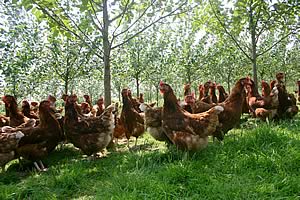 |
|||||||||
|
|||||||||||||||||||
|
|
Countries
Making Progress in Response to Avian Influenza 28/06/07 The response to the deadly H5N1 virus in poultry has significantly improved over the past three years, but the virus remains entrenched in several countries and will continue to spread, FAO’s Chief Veterinary Officer Joseph Domenech said yesterday.
Reports of human cases occur only very sporadically, apart from Egypt and Indonesia, following the progressive control of H5N1 in poultry. “This achievement is the most important demonstration of the effects of worldwide efforts to contain the H5N1 virus,” Domenech said. “In the 15 or so countries in Asia, Eastern Europe and the Middle East, where the H5N1 virus was introduced during the past six months, it was rapidly detected and eliminated or controlled. Most affected countries have been very open about new outbreaks. This shows that countries are taking the H5N1 threat seriously. They are better prepared today and have improved their response systems,” Domenech said at a press conference in Rome on the occasion of the Technical Meeting on Highly Pathogenic Avian Influenza and Human H5N1 Infection.
No reason for complacency But Domenech also stressed that there should be absolutely no reason for complacency. “Recent H5N1 outbreaks in Bangladesh, Ghana, Togo, the Czech Republic and Germany are a clear reminder that the virus still succeeds in spreading to new or previously already infected countries,” Domenech said. A potential human influenza pandemic can not be ruled out as long as the virus continues to exist in poultry. There are still some serious concerns with the global disease situation particularly with regard to Egypt, Indonesia or Nigeria. “Even if bird flu has disappeared from our TV screens, it doesn’t mean that the risk is over. Avian influenza is not a one time event -- the international community will have to live with the disease for several years to come,” he added. A long-term presence of the virus will require a long-term financial and political commitment from governments and the international community to finally contain and eradicate the virus. “What makes the battle against avian influenza so difficult are the many high risk poultry production and marketing practices that still continue in many countries,” Domenech said. Indonesia, for example, has more than 13 000 live poultry markets where birds from different origins are mixed. Unless those practices are modified or changed, the risk of recurrent infection remains high. “The socially and economically equitable adjustment of poultry production and marketing systems for safer product supply is essential to reduce infection risks. Without forgetting that efficient veterinary services and improved private public partnership for better surveillance and control activities remain indispensable,“ Domenech said. He called for intensified monitoring of virus circulation particularly in countries that are using poultry vaccines. “The H5N1 virus is not stable and keeps constantly changing. On one occasion in China last year a new virus strain appeared with different immunologic characteristics which made it necessary to modify the vaccines used in the region concerned. This emergence of a new strain may have happened again more recently in Indonesia,” he said.
|
||||||||||||||||||

|
|
||||||||||||||||||
| home | agri-services | pedigree
pen | news | dairy | beef | machinery quota | property | organisations | site map |
|||||||||||||||||||

